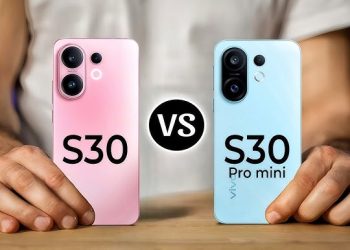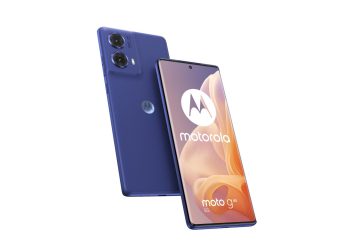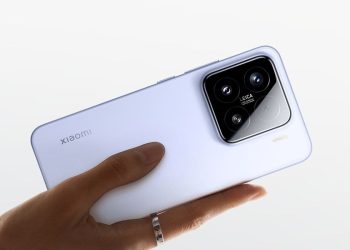We had been hearing about it for several weeks, but it was not until today that Vivo finally presented the new X50 Pro, one of the most special phones in its entire device catalog.
And it is that the Vivo X50 Pro has a feature that we have not had in any other mobile phone to date: a stabilization technology more typical of a gimbal than the camera system of a mobile phone.
Vivo X50 Pro – The Vivo X50 Pro arrives in three different colorsX50, all the information
| Specifications | |
|---|---|
| Dimensions | 158.46 mm x 72.80 mm x 8.04 mm 181.5 grams |
| screen | 6.56-inch AMOLED 90Hz refresh rate |
| Resolution | Full HD + 2376 × 1080 pixels (398 ppi) |
| Processor | Qualcomm Snapdragon 765G (Snapdragon 865 on X50 Pro +) |
| RAM | 8GB LPDDR4x |
| Operating system | Funtouch OS 10.5 based on Android 10 |
| Storage | 128GB, UFS2.1 (256GB on X50 Pro +) |
| Cameras | Rear: 48MP Sony IMX598 main sensor with anti-vibration system (50MP on the X50 Pro +) + 13-megapixel portrait lens + 8MPv super wide-angle + 8MP periscope telephoto with 3x optical and 60x digital zoom Front: 32 MP f / 2.45 |
| Drums | 4,315 mAh with 33W fast charge (44W on the X50 Pro +) |
| Others | On-screen fingerprint reader, AK4377A Hi-Fi audio chip. Face Wake facial recognition |
The cameras, protagonists in a brand design of the house
The Vivo X50 Pro is not a very different phone from other recent models launched by the different brands of the BBK Electronics conglomerate. Its front is a carbon copy of that of the OnePlus 8 Pro and OPPO Find X2 Pro, so we again find ourselves with a small hole located in the upper left part of a panel that curves on both sides.
Beneath this panel is a 6.56-inch diagonal AMOLED screen with Full HD + resolution and a 90Hz refresh rate, in addition to a 180Hz sampling rate. The panel supports HDR10 + content and is supported for the entire DCI-P3 colour space. It also integrates an optical fingerprint reader under the glass.
The rest of its body is made of aluminium and glass, and like the front, the rear also features sharp curves on both sides. This rear panel is led by t he striking camera system of the phone, consisting of a total of four sensors arranged in a rectangular module, where the main protagonists are both the main sensor with its stabilization system, and the “telephoto”, accompanied by a periscope-type lens system.
he striking camera system of the phone, consisting of a total of four sensors arranged in a rectangular module, where the main protagonists are both the main sensor with its stabilization system, and the “telephoto”, accompanied by a periscope-type lens system.
Premium mid-range engine
The front of the Vivo X50 Pro is reminiscent of the OnePlus 8 Pro
The Vivo NEX 3S will continue to be the flagship of the Vivo catalog. At least for now. On this occasion, the company has decided to equip its new terminal with a Qualcomm Snapdragon 765G processor, with eight cores and seven nanometers, accompanied by 8 GB of LPDDR4x RAM and 128 GB of UFS 2.1 storage.
Android 10 is the version of the system that gives life to the X50 Pro, yes, personalized through Funtouch OS in its version 10.5.
The X50 Pro features a 4,315 mAh capacity battery, which the company powers with a 33W fast charge thanks to the charger included with the phone in the box.
A camera attached to a gimbal

If there is a reason that the Vivo X50 Pro is a unique terminal in a market full of clones of traced specifications, it is undoubtedly the innovation that its photographic system brings.
The device’s camera system is led by a main 48-megapixel resolution sensor, surrounded by a stabilization system whose operation resembles that of a gimbal. This system, added to the ability of the phone’s shutter to remain open for a longer period of time than if using a “traditional” optical stabilization system, should translate into images captured in motion scenes with higher quality and sharpness.
This sensor is accompanied by an 8-megapixel “ultra-wide” camera, an 89-megapixel depth sensor, and finally an 8-megapixel “telephoto” added to the periscope-type lens system that I was talking about earlier, which gives the device the ability to shoot images with three-magnification optical zoom and sixty-digital zoom.
For its part, the front camera has a resolution of 32 megapixels.
Price and availability of the Vivo X50 Pro
The Vivo X50 Pro has not come alone. The brand has also taken the opportunity to introduce the Vivo X50, a model with a design that lacks curves on the screen and the stabilization system of its older brother, in addition to reducing the capacity of its battery to 4,200 mAh. It has also presented the Vivo X50 Pro +, and even more cutting-edge model than the X50 Pro, with a Snapdragon 865 processor, a 50-megapixel main camera – instead of 48 -, double the internal storage and a 120 Hz screen. Interestingly, the latter model does not have the Gimbal stabilization system of the “normal” Pro model.










